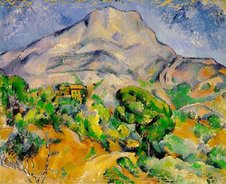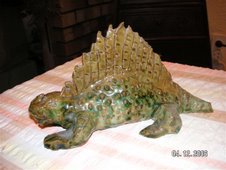Aftermath of the Folkestone earthquake (from BBC website)
Did you read about that earthquake in Kent ? It was piddling on the Richter scale - a mere 4.3, but caused quite a bit of structural damage, and must have been quite terrifying for a few seconds. Being England, which is far from any of the world's major fault-lines, most folk would not have had a clue what was going on. One witness in Folkestone thought there had been a terrorist bomb in the Channel Tunnel.
Back in about 1968, when I taught in Accra, the capital of Ghana, I was taking it easy one Saturday afternoon, putting away a few beers. As I went into the kitchen to get another from the fridge, there was this almighty crash from outside, as if a truck had gone into a pothole or over a big bump or similar.
Briefly I felt the floor and kitchen doorway lurch, and found myself grabbing at anything for support.. But then there was silence; I looked out and could not see a thing, so, somewhat puzzled, proceeded to get another bottle of Club from the fridge.
A few minutes later there was a furious banging at the front door, with my two neighbours, Mike and Ann G. standing there white as sheets. By then I'd forgotten the earlier incident ( testimony perhaps, you may be thinking, to the potency of Ghanaian ale) and asked them in all innocence what was the matter. "For God's sake man, don't you know there's been earthquake ?"
So I explained that I thought it was just a truck or something, and invited them in for a beer, but was the butt of jokes for weeks after - the guy downing beers who did not recognise a severe earth tremor for what is was.
As a one-time science teacher delivering that bit of the National Curriculum called Earth Science, I had to think of a way of getting across the explanation for earthquakes.
They are caused when two tectonic plates come together. When ths happens along a lateral fault line, the two plates are moving in opposite directions and so rub against each other.
*
But the plates tend to stick, and get locked together, due to friction. There is elastic deformation within the rock strata, with pressure gradually building up over time, which may be decades, centuries or longer. Finally, something gives, the plates spring apart with a sudden jerk, releasing huge amounts of energy.
How does one provide a simple picture ? Inspiration struck. Can you click or snap your fingers ? If so, have you ever wondered precisely how that loud sound is produced ?
*
It's a similar mechanism to an earthquake. You first press your thumb hard against your longest finger -the one between the index and ring finger- using friction to keep them together while you increase the pressure. When you then let the two slide apart, the finger catapults off, and slaps down noisily on the fleshy bit at the base of the thumb.
*
It's an example of stored potential energy being converted to kinetic energy. It would not be possible but for the initial friction between the two surfaces.
It's an example of stored potential energy being converted to kinetic energy. It would not be possible but for the initial friction between the two surfaces.
End of science lesson !
Wondering about that title in dubious good taste? Years ago, there was an unofficial competition among Times journalists to write the most boring yet factually accurate newspaper headline. It was won by Claud Cockburn with : Small Earthquake in Chile. Not Many Dead.
*
According to today's Sunday Times, there was only one casualty of the Kent earthquake, who needed to go to hospital, having suffered head and neck injuries. I don't know his/her name, but here's wishing them a speedy recovery !
*
Comments always welcome: emails please to sciencebod01@aol.com






